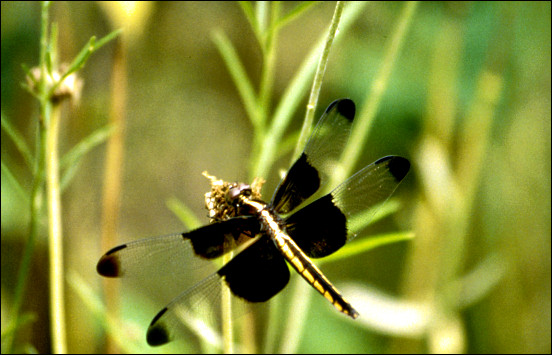

Being creatures of dry land, we automatically fall into the pattern of thinking of other animals being either aquatic or terrestrial. Of course, for many things this works very nicely. When we find fish out on land, it's obvious that they are out of place, not in their preferred habitat. Likewise, most mammals, whales and a few other groups excepted, are notably still tied to the land, entering water mostly to obtain food or escape enemies, and none goes as far as to breath under water.
All this aside, there are many animals that are
fully aquatic during part of their life and fully terrestrial
during the other part. Consider dragonflies. We can expect to see
them cruising back and forth through the air in almost any part
of our desert that is near water. Yet, the early part of their
lives was spent as a predator thoroughly adapted to aquatic life.
Going from larva to adult in these creatures is far more than
just a change in form. In fact, we could consider this a really
extreme makeover!

Contributor: Arthur H. Harris, Laboratory for Environmental Biology, Centennial Museum, University of Texas at El Paso.
Desert Diary is a joint production of the Centennial Museum and KTEP National Public Radio at the University of Texas at El Paso.

Adult dragonfly at rest. Photograph by LaVonda Walton, courtesy of the U.S. Fish and Wildlife Service.